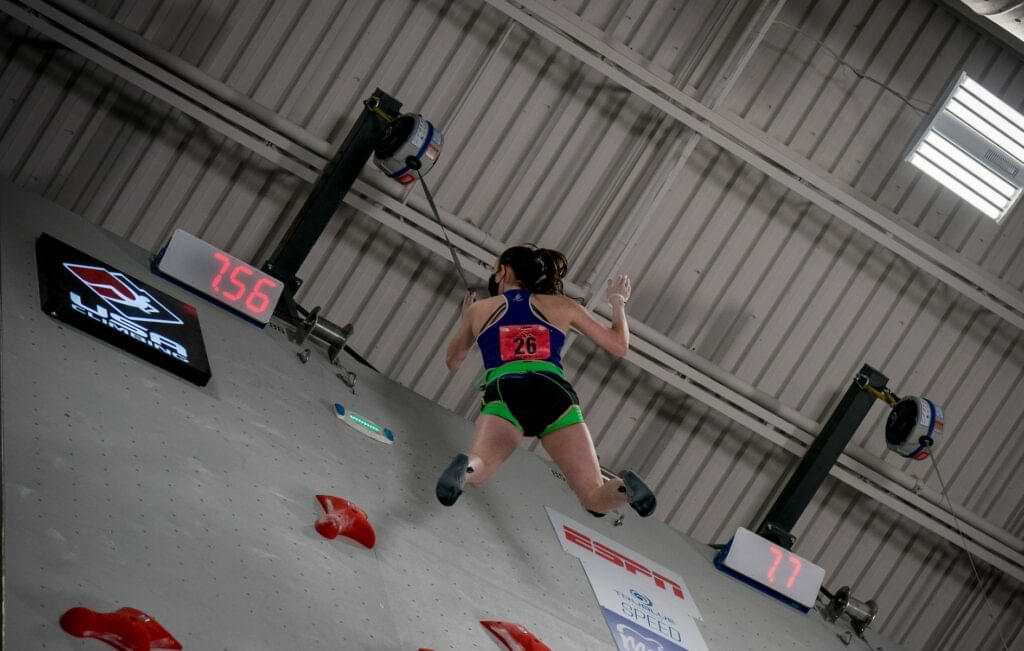If you climb indoors, you rely on the route setters who put up those ever-changing plastic puzzles. They are the ones who let us try new moves, challenge ourselves, and climb with friends when we’re climbing indoors. The routes are the one element in the gym that are constantly changing. What does the route setting process look like, what does it take to set a great route, and are there specific tips for setting auto belay routes? Brent and Aubrey, setters at the Boulder Rock Club (BRC) in Boulder, CO, share their insights and experience about how to set climbing routes.
The Setting Process
First, what is the process like when setting a route? Aubrey, a setter at BRC for three years, often starts at the bottom and makes her way up move by move. Sometimes she has a particular move she wants to incorporate into the route, but other times she lets the route take shape as she sets. “When you do put some time into it and you have an idea, make it come to life, and it works, it’s a really satisfying feeling,” Aubrey said.
The gym itself often has a formula for the percentage of routes at certain grades and the style of routes it likes to provide. Brent, the Head Route Setter at BRC, likes to maintain a mix of resistance routes that are great for training strength and endurance and technical routes that are puzzles to make you stop and think.
What Makes a Great Route?
Brent looks for three main things in all of the routes at the gym: reach, flow, and consistency. We try to make sure that reach is acceptable for most sizes while still retaining a sequence. That’s a tricky thing that you have to figure out when you’re first setting,” Brent said. “The other thing is we try to make sure they have flow, which is kind of a nebulous concept, but each move should flow into the next one in some way. And then we look for consistency. If you’re setting a 5.11, I don’t like a 5.8, 5.8, 5.8 and then a 5.11 move. We try to keep it more consistent. Those are the three biggest things.”
After that, the setter can decide if the route is going to be a resistance climb or a technical route. Maybe you want to create a route that focuses on slopers or crimpers to work on a particular skill or build strength in that area. The BRC setters aim to provide a wide array of routes so climbers can always find something to fit their mood or their training needs.
Tips on Setting Routes for Auto Belay
Auto belays are becoming an essential piece of equipment in climbing gyms, and the BRC is no exception. “We get a lot of business from the auto belays. We have a ton of people who show up and ask “Do you guys have auto belays? Cool, sign me up for a membership.” It’s a big part of our business,” said Brent. ”It’s people who train on their lunch. It’s families and kids. It’s people all across the board, so it affects a lot of different demographics.”
While the BRC setters still use the same principles to set for auto belay routes, there are a handful of things they keep in mind while setting under their TRUBLUEs.
- Set a variety of routes for a variety of climbers. ”We try to set 3-4 routes under each auto belay,” said Brent. ”I try to make sure there is an easy, medium, and hard route, which usually might mean there is a 5.8, 5.10, and a 5.11+. People get pretty psyched when we put a 5.12+/13- on auto belay because then you get a hard climb that’s pretty vertical.”
- Keep all the starting holds behind the belay gate. The belay gate reminds climbers to clip in to the auto belay device, and it works best if all the starting holds are behind the gate.
- Set boundaries to keep climbers in line. The BRC places tape boundaries to the side of each TRUBLUE auto belay to help climbers stay in the appropriate climbing lane.
- Avoid holds that might catch or rub on the webbing, like large side pulls or volumes. Check for large holds or volumes that may interfere with the auto belay webbing when climbing and when clipped to the belay gate at the bottom.
- The climbing lane for auto belays should be thought of as a triangle. It can be wider at the bottom, but each route on auto belay should end with the climber directly under the auto belay device.
- Keep the route in the auto belay’s climbing lane and don’t let it wander too far right or left. This reduces the potential for large swings should a climber come off the wall.
A big thanks to Brent and Aubrey at the Boulder Rock Club for sharing their tips and insights!




Leave a Reply